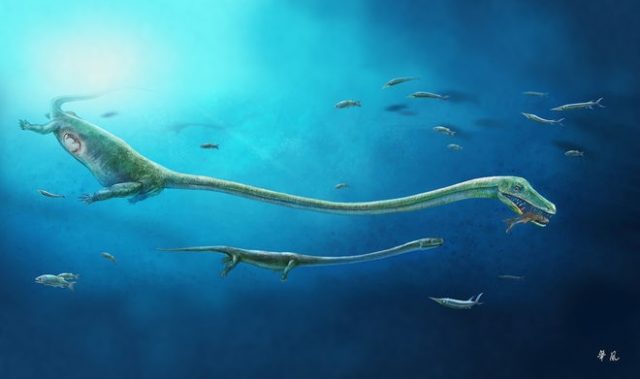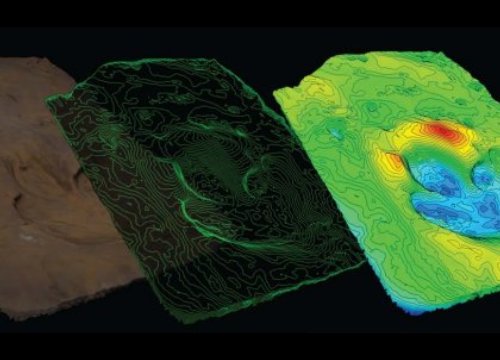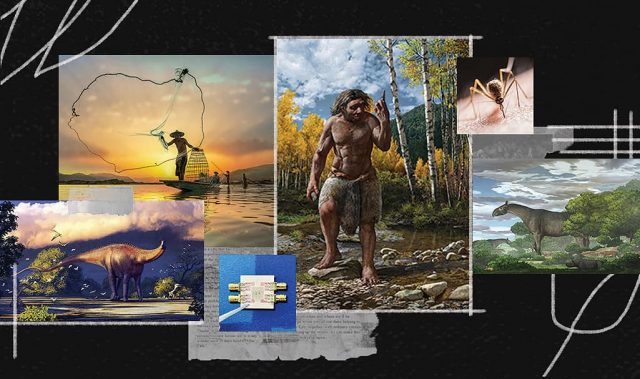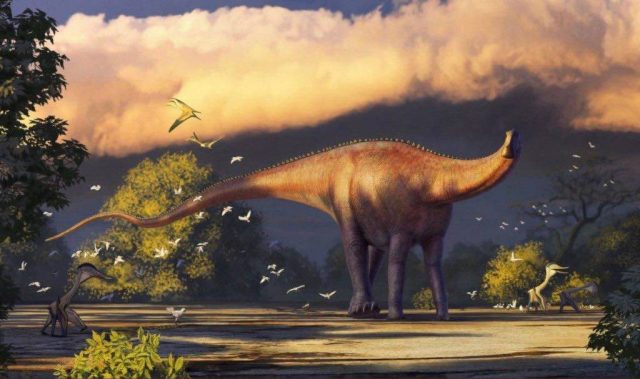AsianScientist (Dec. 18, 2015) – A dinosaur first discovered in 1989 has been revealed to be a distinctly different species from that previously thought. Now Australia’s newest dinosaur, the Kunbarrasaurus (koon-ba-rah-sore-rus) has a parrot-like beak, turtle-like inner ear, and bones in its skin, report a team led by University of Queensland experts in PeerJ.
University of Queensland School of Biological Sciences PhD student Lucy Leahey said the fossil represented the most complete dinosaur so far discovered in Australia and one of the best-preserved ankylosaur fossils in the world.
“Ankylosaurs were a group of four-legged, herbivorous dinosaurs, closely related to stegosaurs,” Leahey said. “Like crocodiles, they had bones in their skin and are commonly referred to as ‘armored’ dinosaurs.”
When it was first studied back in the 1990s, Leahey explained, the fossil was placed it in the same genus as Australia’s only other named ankylosaur, Minmi, which is based on some bones from Roma in Southwestern Queensland.
The team’s research found the fossil was different to the Roma Minmi, and distinct enough from all other ankylosaurs to warrant a new name.
“Kunbarra is the word for ‘shield’ in the Mayi language of the Wunumara people from the Richmond area, and the species name honors the person who originally found the fossil, Mr. Ian Ievers. It means ‘Ievers’ shield lizard,” Leahey said.
Research that started in 2007 involved careful preparation of the palate of the dinosaur at the Denver Museum of Nature and Science, along with CT scanning at the Mater Adult Hospital.
Professor Lawrence Witmer from the Ohio University Heritage College of Osteopathic Medicine used the information to create a 3D reconstruction of the brain, inner ear and nasal cavities, which can be viewed here.
The CT reconstruction revealed that Kunbarrasaurus had a more complicated airway than other dinosaurs, but less so than ankylosaurs from the Northern Hemisphere, according to Professor Witmer.
“The inner ear is proportionately enormous and unlike anything we have seen before in a dinosaur. It looks more like the inner ear of a Tuatara or a turtle. Exactly what the consequences of this are we are still unsure,” said Witmer.
UQ’s Dr. Steve Salisbury said the findings made it clear that the Kunbarrasaurus specimen should be considered as a new dinosaur.
“The sheep-sized herbivore formerly known as Minmi sp. is now known to have had a parrot-like beak, breathed through a nasal passage that looped back on itself, and had an inner ear more like a tuatara than a dinosaur,” he said.
Salisbury said the team’s work also revealed that Kunbarrasaurus is more primitive than the majority of other well-known ankylosaurs from North America and Asia.
“It appears to represent an early, less heavily ‘armored’ member of the group, close to the point at which the ankylosaurs diverged from the other main lineage of armored dinosaurs, the stegosaurs,” Salisbury explained.
The skeleton of Kunbarrasaurus ieversi is on display at the Queensland Museum (Southbank).
The article can be found at: Leahey et al. (2015) Cranial Osteology of the Ankylosaurian Dinosaur Formerly Known as Minmi sp. (Ornithischia: Thyreophora) From the Lower Cretaceous Allaru Mudstone of Richmond, Queensland, Australia.
———
Source: The University of Queensland.
Disclaimer: This article does not necessarily reflect the views of AsianScientist or its staff.












